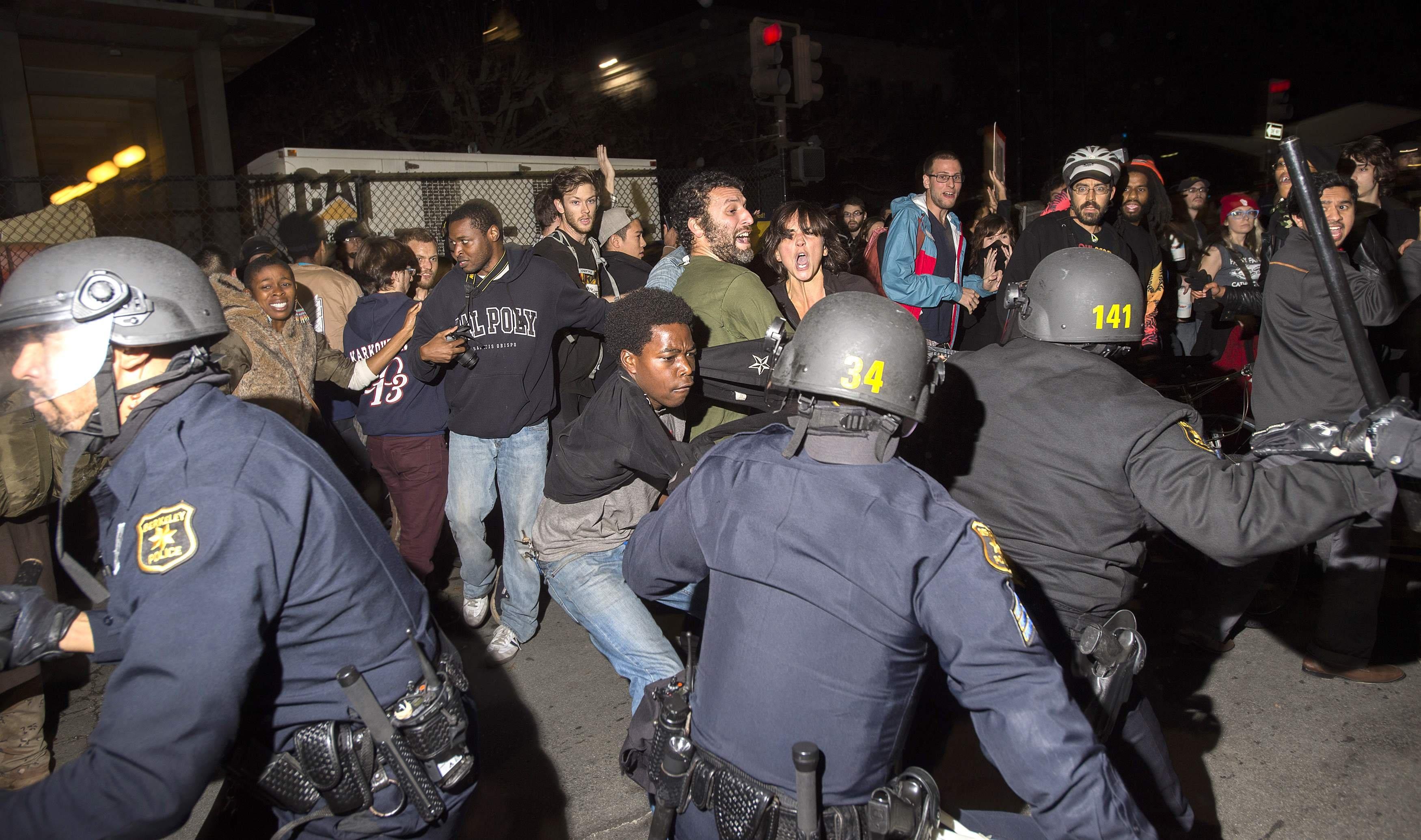With places like UC Berkeley costing tens of thousands per year, many students now come from sheltered and/or upper-class backgrounds, whether they are white or people of color. They are gaining degrees within an institution that is now structured to manufacture the next generation of wealthy and powerful elites, whether in business or the nonprofit industrial complex. So you might, as a student, not have been exposed to what it means to have your kids be target practice for every cop who walks by, simply because they are black or brown. You might not get how it feels to be evicted from your home, made homeless, made criminal. It might feel scary, challenging, or discomforting to now be exposed to ideas, people, and varied life experiences and upbringings that are far from your own underlying assumptions and lived experienced. That’s OK.
You can walk through and beyond those assumptions; you can choose solidarity not charity, to be on the side of the dispossessed, as accomplices and co-conspirators in shaping an egalitarian and self-organized society. As a student who has already chosen to step into the street, despite the odds of that happening given the reactionary state of “higher” education, you can choose to become a rebel who thinks and acts for themselves, collectively with others — and stay one, even if it takes you a while to work through your prickly feelings.
What’s not OK is what students and others are doing with their prickly feelings on the streets to their purported fellow protesters.
It is not OK to take out your own personal limits on others who are trying, like you, to create a better form of social organization, especially when those others are often people who are the precise targets of policing because of skin color and/or class and gender, politics and/or tactics — or whatever.
So rather than yelling “peaceful protest” and waving fingers at people who are doing things that discomfort you — tactically and politically — see your discomfort as your own growing pains, as a wake-up call, as all of us becoming different and better people through the many beautiful, varied, powerful acts of making social change toward a better world as we discomfort ourselves and society.
For example, several nights ago, right in front of the Berkeley police station and lines of riot police, a black person tossed a bit of garbage in the direction of the cops. A white person who looked visibly shaken by that act quickly screamed at the top of their voice, while gesturing frantically toward the black person, “Provocateur! Stop them!” and so on, whipping many other people up to do the same thing. Fortunately, the black person wasn’t arrested, and two white people stood behind the person who was loudly outing them. Also fortunately, the white person realized just as quickly that they were putting the black person in profound danger. “I was feeling upset,” the white person said. “But I should have walked away for a minute or two instead of yelling. I won’t do that again.”
A lack of solidarity can also be traced to disagreements about strategic symbols, strategic choices, and/or forms of organization, and wanting to see things go a certain way. Perhaps this is not the kindest way to put it, but such an outlook, at heart, relies on notions of control: protesters wanting things to go their own way — a singular way that fits with what they think is the best thing to do. That translates into a sentiment: “we” need to do something [fill in a single tactic or strategy] that “people” can understand.
Yet as should be apparent from all the rainbow of strategies, tactics, protests, and direct actions as well as prefigurative politics flowering across the United States, different direct actions and tactics speak to different people. That’s precisely why this gorgeous (albeit always messy) movement is staying so strong, growing so much. Indeed, it is dynamic because people have been innovating tactics, sharing them across the continent via social medias, and then borrowing them for their cities and towns, to further innovate. Some people are moved by die-ins in malls; others by trains or freeways or bridges being blocked, or kids walking out of their schools in defiance of their teachers; others are touched by seeing a new luxury restaurant’s windows smashed, knowing that such places mean more policing, criminalization, and evictions of people of color and the poor; still others are moved by graffiti on the side of police cars, because it signals that the police aren’t thoroughly in control as an invading army; and on and on. Mostly, many are simply moved by the fact — and therefore are starting to join enthusiastically in the protest, too — that millions of feet are pounding many miles of pavement night after night after night against killer cops and white supremacy.
We haven’t stopped, though the police are working overtime to divert and confound us.
Read More | "Solidarity, as Weapon & Practice, versus Killer Cops & White Supremacy" | Cindy Milstein | Outside the Circle
